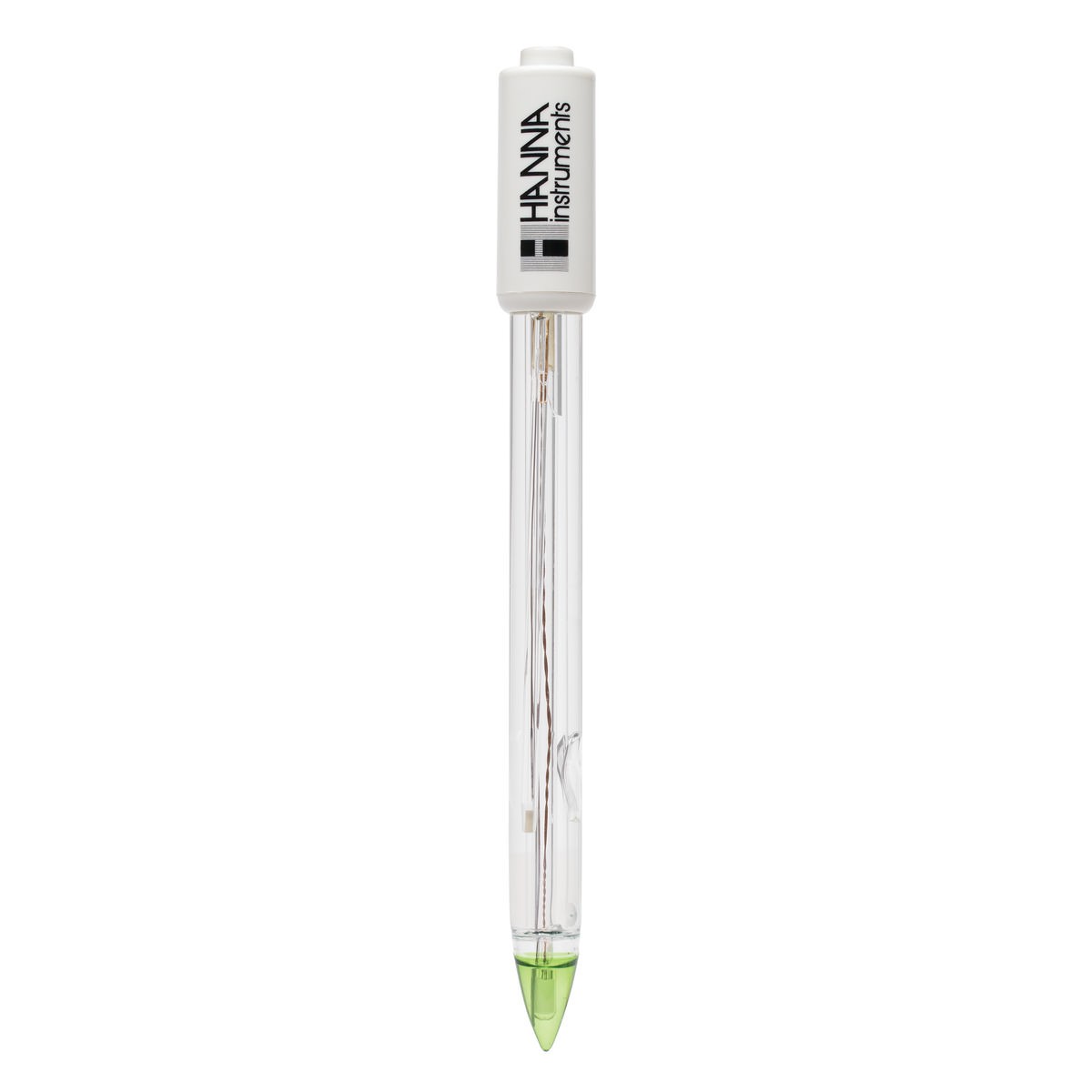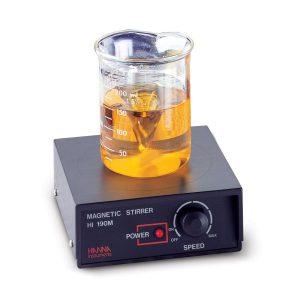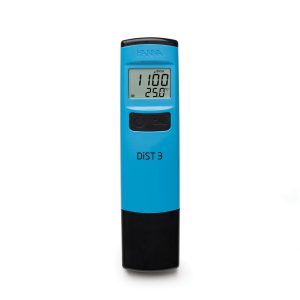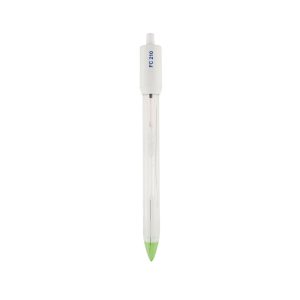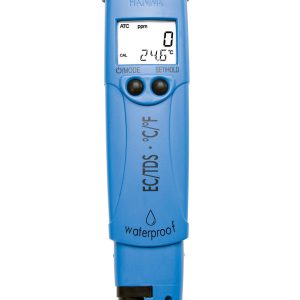תיאור
Details
Hanna Instruments offers a wide variety of pH electrodes that are designed for many different applications. The type of glass used for sensing pH, bulb shape, body material, type of junction, type of reference and electrolyte used are just some of the design considerations.
The FC2323 uses low temperature (LT) glass, conical bulb, food grade PVDF body, and open junction with viscolene gel electrolyte.
 |
Built-In MicrochipThe built-in microchip stores sensor type, serial number and calibration information including date, time, offset, slope, probe condition and buffers used. This information is automatically retrieved by edge® once the electrode is plugged in. The ability to transfer information allows for hot swapping of probes without having to recalibrate. All pH measurements are performed within the electrode and transferred digitally to the meter. This overcomes any noise issues associated with the traditional high impedance analog measuring system. Electrical noise can be generated from a built in temperature sensor and while working in a humid environment |
 |
Conical Glass TipThe conical shaped tip design allows for penetration into solids, semi solids, and emulsions for the direct measurement of pH in food products including meat, cheese, yogurt, and milk. The glass tip uses a special LT (low temperature) glass formulation with a lower resistance of approximately 50 megaohms compared to GP (general purpose) glass with a resistance of about 100 megaohms. This is beneficial since many food products are stored at low temperatures. As the temperature of the glass decreases in the sample, the resistance of the LT glass will approach that of GP glass. If using GP glass, the resistance would increase above the optimum range, resulting in increased impedance and ultimately affecting the measurement |
 |
Open Reference JunctionSuspended solids and proteins found in food products will clog a conventional ceramic reference junction. This clogging will impede the measurement circuit between the indicating glass electrode and the internal reference resulting in slower response time, erratic readings and frequent electrode replacement. The open junction design consists of a solid gel (viscolene) interface between the sample and internal Ag/AgCl reference. This interface not only prevents silver from entering the sample, but also makes it impermeable to clogging, resulting in a fast response and stable readings |
 |
Glass Electrode BodyThe glass electrode body is suitable for a wide range of applications due to its chemical resistance. The glass electrode is compatible with many non-aqueous solvents and other aggressive chemicals. Glass is also resistant to many forms of radiation, such as ultraviolet radiation |
Specifications
| Body Material | glass |
|---|---|
| Reference | double, Ag/AgCl |
| Junction / Flow Rate | open |
| Electrolyte | viscolene |
| Range | pH: 0 to 12 |
| Max Pressure | 0.1 bar |
| Tip Shape | conic (12 x 12 mm) |
| Body Length / Overall Length | 120 mm / 163.5 mm |
| Recommended Operating Temperature | 0 to 60°C (32 to 140°F) |
| Temperature Sensor | yes |
| Matching Pin | no |
| Amplifier | no |
| Digital | yes |
| Compatible Meters | edge multiparameter, edge dedicated |
| Cable | coaxial; 1 m (3.3’) |
| Connection | 3.5 mm connector |
| Applications | application specific purpose, dairy |


